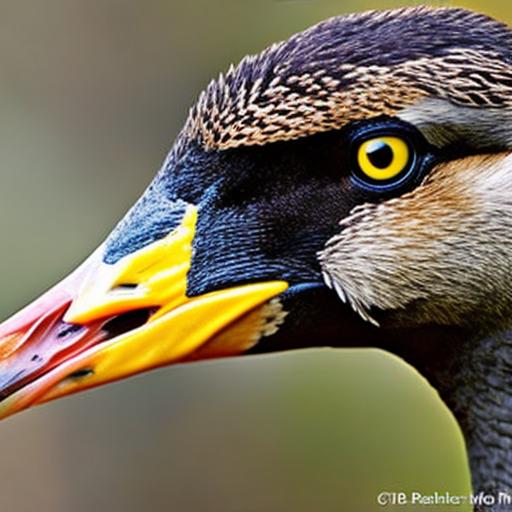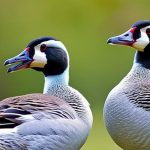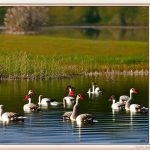Geese are known for their strong migratory instincts and their tendency to return to the same nesting and feeding grounds year after year. Understanding the behavior of geese is crucial in developing effective strategies for deterring them from unwanted areas. Geese are social birds that often travel in flocks, and they are highly protective of their nesting sites and offspring. They are also attracted to open grassy areas near water, making golf courses, parks, and residential lawns prime targets for their presence.
Geese are herbivores and primarily feed on grass, aquatic plants, and grains. They are also drawn to areas with easy access to water for drinking and bathing. Geese are known to be territorial and can become aggressive when they feel threatened or when protecting their young. By understanding these behaviors, property owners can develop a comprehensive plan to deter geese from their premises effectively.
Geese are also known for their adaptability and intelligence, making it essential to employ a variety of deterrent methods to prevent them from becoming accustomed to any single strategy. By understanding the behavior of geese, property owners can implement a multi-faceted approach to effectively discourage geese from frequenting their property.
Key Takeaways
- Geese are territorial and protective of their nesting areas, so understanding their behavior is crucial in deterring them from unwanted areas.
- Physical barriers such as fences, netting, and hedges can effectively prevent geese from accessing certain areas.
- Repellents like taste aversions and visual deterrents like scarecrows can discourage geese from settling in specific locations.
- Sound deterrents like propane cannons and visual deterrents like reflective tape can effectively deter geese from unwanted areas.
- Removing food sources such as grass clippings and spilled birdseed can help discourage geese from frequenting certain areas.
- Utilizing geese-resistant landscaping with tall grasses and shrubs can make an area less attractive to geese.
- Seeking professional assistance from wildlife management experts can provide effective and humane solutions for managing geese populations.
Creating Physical Barriers
One effective method for deterring geese from unwanted areas is by creating physical barriers that prevent them from accessing the space. Fences, hedges, and other structures can be used to block geese from entering specific areas such as lawns, gardens, and ponds. These barriers should be at least three feet high to prevent geese from easily stepping or flying over them.
Another physical barrier that can be effective in deterring geese is the use of fishing line or monofilament line strung in a grid pattern over grassy areas. When geese attempt to land on these areas, they encounter the lines and are unable to find a comfortable place to land, causing them to seek alternative locations.
Additionally, the installation of floating barriers in ponds or lakes can prevent geese from accessing these water sources. These barriers can be made of materials such as plastic or wood and should be placed at the water’s edge to discourage geese from entering the area.
By creating physical barriers, property owners can effectively deter geese from accessing their property and reduce the likelihood of damage caused by their presence.
Using Repellents
Another method for deterring geese from unwanted areas is by using repellents that make the space less appealing to them. There are various types of repellents available, including chemical sprays, taste aversions, and visual deterrents.
Chemical sprays can be applied to grassy areas to make them less palatable to geese. These sprays often contain non-toxic ingredients that create an unpleasant taste or smell for the geese, discouraging them from feeding on the treated areas.
Taste aversions can also be used to deter geese from specific locations. These aversions are typically made from natural ingredients that create an unpleasant taste when ingested by the geese. By applying these aversions to grassy areas or plants, property owners can discourage geese from feeding on these spaces.
Visual deterrents such as predator decoys, reflective objects, or scarecrows can also be effective in deterring geese from specific areas. These deterrents create a sense of danger or unease for the geese, causing them to avoid the treated spaces.
By using repellents, property owners can make their space less appealing to geese and reduce the likelihood of their presence on the property.
Implementing Sound and Visual Deterrents
In addition to physical barriers and repellents, sound and visual deterrents can also be effective in deterring geese from unwanted areas. Sound deterrents such as propane cannons, sonic devices, or recorded distress calls can create a sense of danger for geese, causing them to avoid the treated spaces.
Visual deterrents such as predator decoys, reflective objects, or scarecrows can also be effective in deterring geese from specific areas. These deterrents create a sense of danger or unease for the geese, causing them to avoid the treated spaces.
Another effective visual deterrent is the use of lasers or strobe lights that create a disorienting effect for geese, making it uncomfortable for them to remain in the area.
By implementing sound and visual deterrents, property owners can effectively discourage geese from frequenting their property and reduce the likelihood of damage caused by their presence.
Removing Food Sources
One effective method for deterring geese from unwanted areas is by removing their access to food sources. Geese are primarily herbivores and feed on grass, aquatic plants, and grains. By reducing or eliminating these food sources, property owners can discourage geese from frequenting their property.
One way to remove food sources is by implementing regular lawn maintenance practices such as mowing grass to a short height. This makes it less appealing for geese to feed on the grass and reduces their likelihood of frequenting the area.
Property owners can also remove or restrict access to grains or other food sources that may attract geese. This can be achieved by storing grains in secure containers or using bird feeders that are inaccessible to geese.
By removing food sources, property owners can make their space less appealing to geese and reduce the likelihood of their presence on the property.
Utilizing Geese-Resistant Landscaping

Another effective method for deterring geese from unwanted areas is by utilizing geese-resistant landscaping techniques. This involves selecting plants and grasses that are less appealing to geese and designing landscapes in a way that discourages their presence.
Geese-resistant landscaping often involves using plants with strong odors or unpalatable tastes that deter geese from feeding on them. Additionally, selecting plants with dense foliage or thorny textures can make it uncomfortable for geese to land or nest in these areas.
Property owners can also design landscapes with features such as steep slopes, rocky terrain, or water features that make it less appealing for geese to access these spaces.
By utilizing geese-resistant landscaping techniques, property owners can effectively discourage geese from frequenting their property and reduce the likelihood of damage caused by their presence.
Seeking Professional Assistance
In some cases, deterring geese from unwanted areas may require professional assistance. Wildlife management companies specialize in developing comprehensive strategies for deterring geese and other nuisance wildlife from properties.
These professionals can conduct site assessments to identify factors that may be attracting geese to the area and develop customized plans for deterring them effectively. They may also implement techniques such as habitat modification, hazing programs, or population control measures to reduce the presence of geese on the property.
Additionally, wildlife management companies can provide ongoing monitoring and maintenance services to ensure that the deterrence strategies remain effective over time.
By seeking professional assistance, property owners can benefit from the expertise and resources of wildlife management companies to effectively deter geese from their property and minimize the potential damage caused by their presence.
In conclusion, deterring geese from unwanted areas requires a multi-faceted approach that takes into account their behavior and utilizes a variety of deterrent methods. By understanding the behavior of geese and implementing strategies such as physical barriers, repellents, sound and visual deterrents, removing food sources, utilizing geese-resistant landscaping, and seeking professional assistance when necessary, property owners can effectively discourage geese from frequenting their property and reduce the likelihood of damage caused by their presence.
Looking for effective ways to keep geese out of your yard? Check out this insightful article on PoultryWizard.com that offers practical tips and solutions for managing geese in your outdoor space. Whether it’s creating barriers, using repellents, or implementing other strategies, this article provides valuable advice to help you maintain a goose-free yard. For more helpful poultry-related content, you can also explore their articles on chicken coop interior ideas, converting a shed to a chicken coop, and building an A-frame chicken coop.
FAQs
What are some effective methods for keeping geese out of my yard?
Some effective methods for keeping geese out of your yard include using physical barriers such as fences or netting, using visual deterrents such as scarecrows or reflective tape, and using sound deterrents such as noise-making devices.
Are there any natural deterrents that can be used to keep geese away?
Yes, there are natural deterrents that can be used to keep geese away, such as planting tall grasses or shrubs around the perimeter of your yard, or using natural predators such as dogs or birds of prey to scare off the geese.
Is it legal to use certain methods to keep geese out of my yard?
It is important to check with local wildlife authorities to ensure that the methods you are using to keep geese out of your yard are legal. In some areas, certain deterrents or methods may be prohibited or regulated.
How can I prevent geese from returning to my yard after I have successfully deterred them?
To prevent geese from returning to your yard after successfully deterring them, it is important to consistently maintain the deterrents and regularly inspect your yard for any signs of geese activity. Additionally, removing any food sources or nesting areas can help prevent geese from returning.
Meet Walter, the feathered-friend fanatic of Florida! Nestled in the sunshine state, Walter struts through life with his feathered companions, clucking his way to happiness. With a coop that’s fancier than a five-star hotel, he’s the Don Juan of the chicken world. When he’s not teaching his hens to do the cha-cha, you’ll find him in a heated debate with his prized rooster, Sir Clucks-a-Lot. Walter’s poultry passion is no yolk; he’s the sunny-side-up guy you never knew you needed in your flock of friends!







